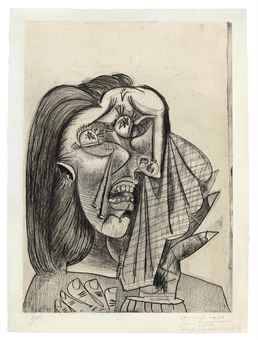Picasso Print Breaks the $5 Million Barrier
I guess it paid off to stick it in their evening sale. Yes, folks, last night’s La femme qui pleure, I at Christie’s NY went for $5,122,500, thereby setting the world’s record for a print by any artist. It also more than doubled the previous record for a Picasso print at auction, an unsigned impression of La Minotauromachie at just under $2M last year in London. Wait just a minute—I have to stop and catch my breath….
Picasso Print Breaks the $5 Million Barrier Read More »

